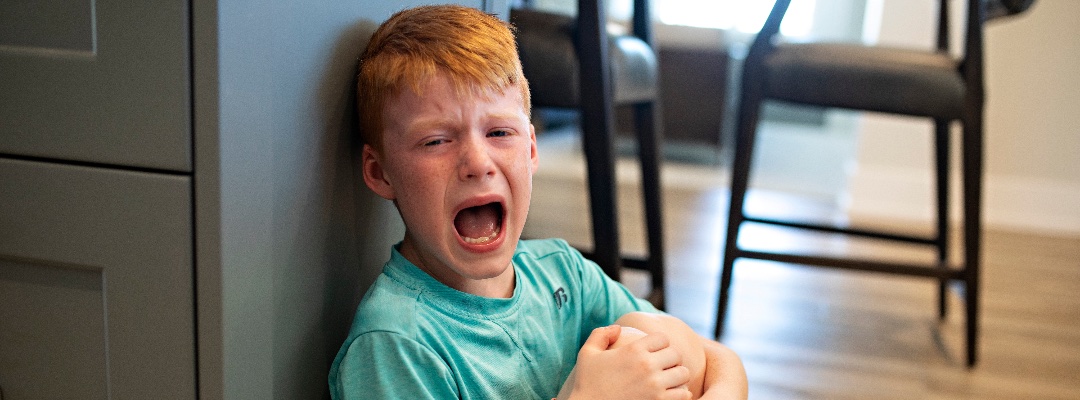Key Indicators & Elements in Choosing ABA Therapy for Autistic Children
Applied Behavior Analysis (ABA) is a therapy based on the science of learning and behavior. It aims to improve specific behaviors like social skills, communication, reading, and school work. It also teaches important life skills such as using hands for tasks, personal hygiene, grooming, and daily household tasks.
Deciding if ABA therapy is the right option for your child depends on their specific needs and your family’s goals. In this article, we look at some of the key indicators and elements of the practice to help you assess ABA for your child.
When to Implement Autism Intervention Strategies
The impact of autism can vary greatly from one child to another. Usually parents, family members, and caregivers assess if a child may benefit from an intervention.
Common Observed Behaviors
Common challenging behaviors in children with autism include:
- Refusing or ignoring instructions
- Engaging in socially incorrect actions (such as banging utensils on the table or hurting others)
- Aggressive behavior
- Tantrums
- Repetitive actions (also known as stimming)
- Self-harm or harm to others
Behavior Triggers
It’s crucial for parents and caregivers to recognize the triggers behind these behaviors. This allows them to create an appropriate response. Traditional discipline methods, like time-outs, may not effectively address or reduce these behaviors.
There are several reasons why children with autism may exhibit unexpected or challenging behaviors. These include:
- Difficulty understanding verbal and non-verbal communication, such as gestures, tone of voice, or context
- Communication barriers (some children with autism may be non-verbal), which can lead to frustration
- Sensitivity to sensory stimuli like sights, sounds, or smells
- Aggressiveness
- Anxiety
- Resistance to changes in routine
Assessing Your Child’s Needs
The first step in determining if ABA is right for your child is to assess their unique needs. Consider the following questions:
- What specific behaviors or skills does your child need help with?
- How does your child respond to structured activities and routines?
- Is your child motivated by rewards and positive reinforcement?
Communication and Social Skills Challenges
Children with ASD often face difficulties in expressing themselves, engaging in social interactions, or interpreting social cues. If your child struggles with these areas, ABA therapy can be particularly beneficial. ABA techniques are designed to help children communicate effectively, understand social norms, and form meaningful relationships.
Behavioral Concerns
Does your child exhibit behaviors that interfere with daily life, such as tantrums, aggression, or self-injury? ABA therapy focuses on understanding why these behaviors occur. It uses positive reinforcement strategies to replace them with healthier alternatives. If your child’s behavior is impacting their safety or quality of life, ABA can provide structured interventions.
Difficulty with Daily Living Skills
Many children with ASD struggle with adaptive skills like dressing and brushing their teeth. ABA therapy offers effective tools for children having difficulty mastering basic self-care or daily tasks. ABA therapy can help teach and reinforce important life skills that allow your child to become more independent.
Understanding Your Goals and Commitment
You Desire a Tailored, Data-Driven, Enjoyable Approach
ABA therapy is highly individualized and relies on data to track progress. ABA therapists regularly collect data to assess which strategies are working and adjust the program as needed. This ensures that your child is receiving the most effective treatment plan.
If you’re looking for a therapy that is highly personalized, ABA may be a great option. A treatment plan will be tailored to your child’s specific strengths and areas of improvement. The individualized nature of ABA therapy sessions fosters a positive and supportive learning environment.
ABA therapy for children is designed to be engaging and enjoyable. Therapists use play-based activities to teach new skills, making learning fun and motivating for the child.
Long-Term, Sustainable Progress
ABA therapy is an impactful process, not a quick fix. It is often implemented over the course of months or even years, with a focus on long-term success. ABA’s evidence-based methods and focus on continuous progress to build foundational skills that last a lifetime. The ultimate goal is for your child to achieve greater independence and improve their overall quality of life.
Family Involvement
ABA therapy requires a significant commitment of time and effort. It often involves multiple therapy sessions per week, and progress may take time. It is essential to be prepared for the long-term investment. You should expect to work closely with your child’s therapist to maximize the benefits of the therapy.
Early Intervention ABA
ABA is particularly effective when started early. Addressing behaviors during the crucial early years of a child’s life can significantly improve developmental outcomes. Research shows that early intervention can lead to better long-term improvements in communication, social skills, and cognitive abilities.
Choosing the Right ABA Provider
Consult with Professionals and Parents
Consulting with professionals who specialize in autism and behavioral therapy can provide valuable insights. A qualified ABA therapist can conduct a comprehensive assessment of your child and recommend an individualized therapy plan. Speaking with other parents who have experience with ABA can also offer practical perspectives and support.
Training and Experience
When selecting an ABA provider, it’s important to consider credentials and experience. Look for Board-Certified Behavior Analysts (BCBAs) with a proven track record of working with children with autism. Signs of a qualified provider include early intervention experience and a good understanding of autism therapy methods.
Personalized Approach
Because each child with autism is unique, their therapy should reflect that individuality. Choose a provider who offers a personalized approach, tailoring therapy sessions to meet your child’s specific needs and goals. A good provider will involve you in the therapy process. He/she will want to ensure that you are an active participant in your child’s progress.
Positive Environment
The environment in which therapy takes place plays a significant role in its effectiveness. A positive and engaging atmosphere can make a world of difference. It is best to pre-qualify clinics to see if an environment aligns with your child’s comfort and learning style. You can do this by visiting the therapy centers you are considering to observe active sessions.
Use of Various Techniques
ABA incorporates various autism therapy techniques including Discrete Trial Training (DTT), Natural Environment Teaching (NET), and Pivotal Response Training (PRT). These techniques are used to teach a wide range of skills, from basic communication to complex social interactions. A good therapist will select multiple techniques based on a child’s individual needs and goals.
Read more: Ask These Questions to Get the Best ABA Therapy

Conclusion
Deciding if ABA is right for your child is a significant decision that requires careful consideration and research.
By assessing your child’s needs, understanding the commitment involved, and consulting with professionals, you can make an informed decision.
Please reach out for additional support and resources at 866-614-1169 or info@brighterstridesaba.com.

 We've just released an article!
Check out our blog!
We've just released an article!
Check out our blog!



